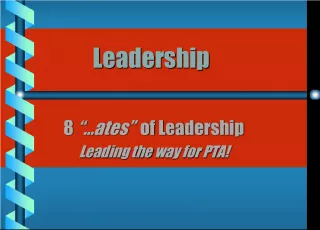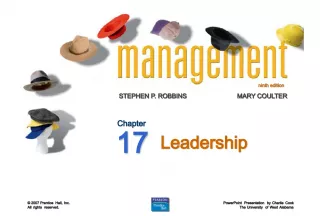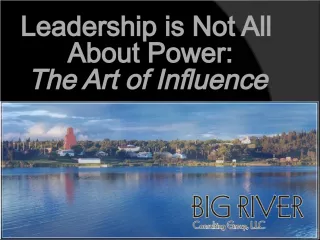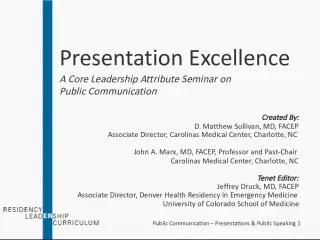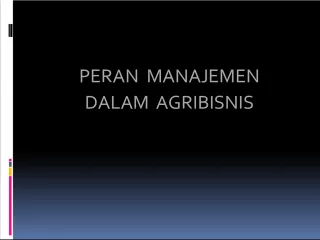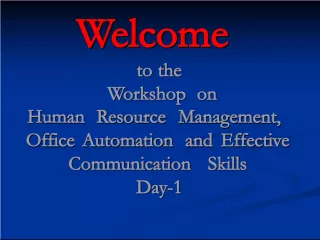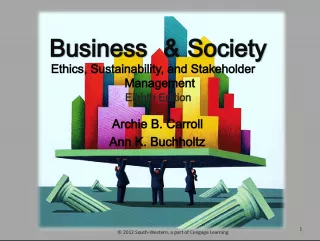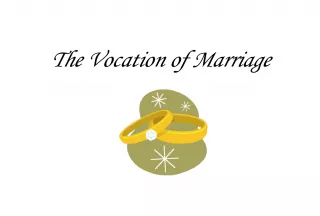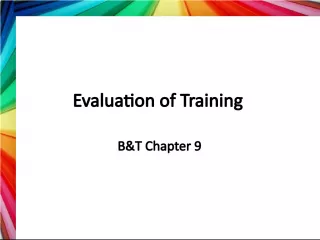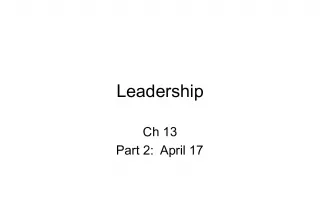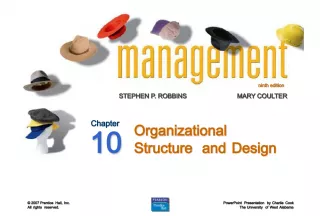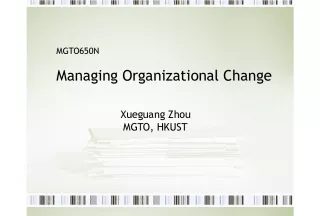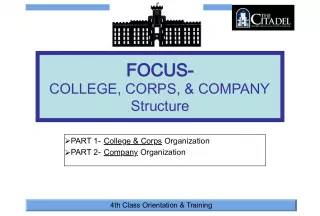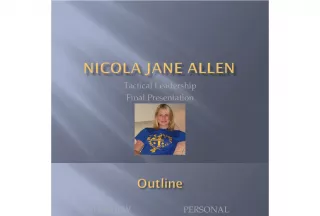Qualities of Leadership and Management: Skills and Attributes for Organizational Effectiveness
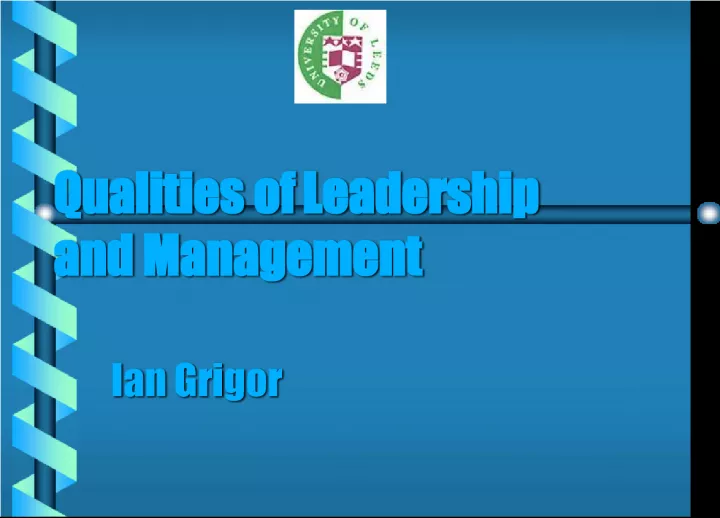

This session aims to explore the skills and attributes that effective leaders and managers possess, and how these factors impact organizational effectiveness. Participants will analyze the overlapping and differing roles of leaders and managers, and gain insights into how to succeed in both positions.
- Uploaded on | 0 Views
-
 shyanne
shyanne
About Qualities of Leadership and Management: Skills and Attributes for Organizational Effectiveness
PowerPoint presentation about 'Qualities of Leadership and Management: Skills and Attributes for Organizational Effectiveness'. This presentation describes the topic on This session aims to explore the skills and attributes that effective leaders and managers possess, and how these factors impact organizational effectiveness. Participants will analyze the overlapping and differing roles of leaders and managers, and gain insights into how to succeed in both positions.. The key topics included in this slideshow are leadership, management, skills, attributes, organizational effectiveness,. Download this presentation absolutely free.
Presentation Transcript
1. Qualities of Leadership and Management Qualities of Leadership and Management Ian Grigor Ian Grigor
2. Aims of session Aims of session To analyse the skills and attributes that describe leadership and management To analyse the skills and attributes that describe leadership and management To analyse how they impact on organisational effectiveness To analyse how they impact on organisational effectiveness
3. Objectives Objectives b To analyse what effective leaders and managers do b To analyse what effective leaders and managers do b To analyse the skills of leaders and managers b To analyse the skills of leaders and managers b To compare and contrast where leaders and managers overlap b To compare and contrast where leaders and managers overlap b To analyse where their roles differ b To analyse where their roles differ
4. Skills of effective leaders (Pedler, Burgoyne and Boydell, 1986) Skills of effective leaders (Pedler, Burgoyne and Boydell, 1986) b Command of basic facts i.e. ability to manage information b Command of basic facts i.e. ability to manage information b Relevant professional understanding i.e. professional credibility b Relevant professional understanding i.e. professional credibility b Continuing sensitivity to events i.e. an humanistic approach b Continuing sensitivity to events i.e. an humanistic approach b Analytical, problem-solving, decision/judgement-making skills b Analytical, problem-solving, decision/judgement-making skills b Social skills and abilities b Social skills and abilities b Emotional resilience b Emotional resilience b Proactivity - inclination to respond purposefully to events b Proactivity - inclination to respond purposefully to events b Creativity b Creativity b Mental agility b Mental agility b Balanced learning habits and skills b Balanced learning habits and skills b Self-knowledge b Self-knowledge
5. Skills of effective leaders (Whetton and Cameron, 1991) Skills of effective leaders (Whetton and Cameron, 1991) b Verbal communication (including listening) b Verbal communication (including listening) b Managing time and stress b Managing time and stress b Managing individual decisions b Managing individual decisions b Recognising, defining and solving problems b Recognising, defining and solving problems b Motivating and influencing others b Motivating and influencing others b Delegating b Delegating b Setting goals and articulating a vision b Setting goals and articulating a vision b Self-awareness b Self-awareness b Team-building b Team-building b Managing conflict b Managing conflict
6. So what is a leader and what does she do? So what is a leader and what does she do? Its often a good idea to think in terms of a great leader. Its often a good idea to think in terms of a great leader.
7. Where do leaders arise from? Where do leaders arise from? This is a situational phenomenon, often prompted by the environment that they exist in e.g. the terrorist attack on New York This is a situational phenomenon, often prompted by the environment that they exist in e.g. the terrorist attack on New York
8. Do leaders have to work within limits in that capacity? Do leaders have to work within limits in that capacity? The main point is that leaders are not formally appointed so they can, and often do, push back the boundaries The main point is that leaders are not formally appointed so they can, and often do, push back the boundaries
9. Leadership theories/styles Leadership theories/styles b Trait born to lead b Trait born to lead b Behavioural autocratic, democratic, laissez-faire b Behavioural autocratic, democratic, laissez-faire b Contingency style + situation b Contingency style + situation b Transformational - innovators b Transformational - innovators
10. How, what, why and where do leaders impact? How, what, why and where do leaders impact? b How do they lead? b How do they lead? b What attributes do they utilise? b What attributes do they utilise? b For whose benefit? b For whose benefit? b In what arena(s) and under what circumstances? b In what arena(s) and under what circumstances?
11. So what are managers? So what are managers? b They are employed by the organisation to achieve goals b They are employed by the organisation to achieve goals b As such, the organisation is their prime concern b As such, the organisation is their prime concern b They have demonstrated that they have managerial skills b They have demonstrated that they have managerial skills b They (hopefully) enjoy professional respect but as professional managers b They (hopefully) enjoy professional respect but as professional managers
12. What do they do? What do they do? b Manage people how? b Manage people how? b Manage finance in what way? b Manage finance in what way? b Manage information where do they get it? b Manage information where do they get it? b Manage projects e.g.??? b Manage projects e.g.??? b Manage change b Manage change
13. How do the skills of a manager overlap with that of a leader? How do the skills of a manager overlap with that of a leader? b Excellent communication skills b Excellent communication skills b Fairness b Fairness b Professional knowledge b Professional knowledge b Planning b Planning b Visionary b Visionary
14. Where do managers and leaders differ? Where do managers and leaders differ? b Accountability b Accountability b The type of professional knowledge they use b The type of professional knowledge they use b The beneficiaries of success the group or the organisation b The beneficiaries of success the group or the organisation
15. Can they be one and the same person? Can they be one and the same person? They can but their goals in life are different. However, such is their degree of overlap e.g. in attributes that the ideal is a manager who leads. A good example is Mayor Giullianni of New York. They can but their goals in life are different. However, such is their degree of overlap e.g. in attributes that the ideal is a manager who leads. A good example is Mayor Giullianni of New York.
16. Objectives Objectives b To analyse what effective leaders and managers do b To analyse what effective leaders and managers do b To analyse the skills of leaders and managers b To analyse the skills of leaders and managers b To compare and contrast where leaders and managers overlap b To compare and contrast where leaders and managers overlap b To analyse where their roles differ b To analyse where their roles differ
